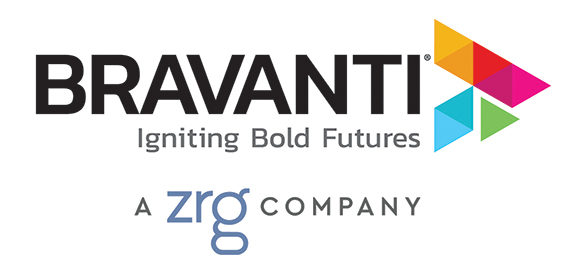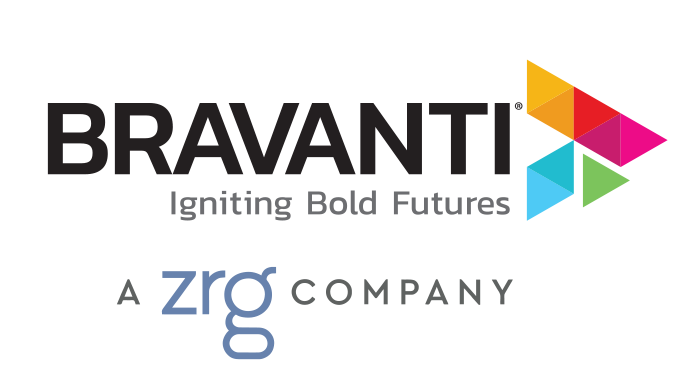By Diana Faison
Virtual learning programs are more popular than ever, a 2020 legacy that’s likely here to stay. Many companies have discovered, however, that these programs are easier pondered than pulled off. Despite intense focus on the technology involved, it’s important to note that virtual learning is so much more than technology; from content and format to methods, facilitation, and participation, there are many more considerations for success.
The Evolution of Virtual Learning Programs
About 20 years ago, one of my first virtual learning sessions had me alone in a television studio, facilitating to a camera as I was broadcast to various locations around the country. No participants, no connection, no interaction—just me and a camera. Within a few years, I was delivering cutting-edge learning programs in the same studio-type setting, but this time I could see participants on the screen. In this setup, the extent of the interaction was a wave of the hand if the audio wasn’t working, or a smile so I knew they were engaged, but it was progress nonetheless.
Throughout the decade that followed, the world of L&D continued to innovate with available technology to meet the shifting needs of an increasingly global workforce. For a while, with recording studio monologues, then television studio broadcasts, one could argue that learning industry needs were ahead of technological capabilities. Even so, the priority was never technology; the priority was how technology enabled learning.
Fast forward to today where the speed of technological innovation has far outpaced the learning industry. As talent leaders, we have access to tools we could only dream of and yet the perfect combination of virtual and in-person learning still escapes most organizations. We’ve gone from the need for better learning tools to the demand for better learning strategies. But we had the relative luxury of time, and organizations spent years dabbling in virtual learning programs without dire circumstances pushing us forward—until now.
Which brings us to our current predicament, where we find ourselves grappling with the fallout of a global pandemic. While I typically advocate a blended approach to learning (combining some in-person sessions with some pre-work, followed by online delivery), the pandemic forced our hand this year to accelerate virtual learning programs from a future initiative to an urgent, present-day need.
This near-immediate shift to virtual-only learning created a massive challenge for talent leaders and their organizations. Take our experience for example. We were mid-way through a 9-month program with a large professional services firm when COVID-19 began to spread in the U.S. It hit us immediately and hard, forcing us to pivot halfway through the program. Virtual learning became an imperative overnight and yet – we knew what to do. Based on years of preparation, we were able to turn in-person, high-touch, high–rapport learning programs into fully virtual experiences.
We learned a lot from this experience, mastering the do’s and don’ts of building a high-performing virtual learning program, and now we’re ready to share six key considerations to help you build your own successful program.
Six Key Considerations for Building a Virtual Learning Program
1. In virtual learning, formatting is important, but it isn’t everything
At this moment, you might be focused on buying, setting up, or integrating a new online learning tool. This is no small undertaking, but don’t miss the bigger picture.
To use a tried–and–true analogy, if the learning format is a road, then the vehicle (learning methods), the driver (facilitator), the message (learning content), and the destination (participants) are of equal or greater importance. Neglect one and everything is at risk. Maintain focus on all of the virtual learning components for a program that is well-rounded:
- Content: lessons, topics, deliverables
- Formats: VILT, on-demand training videos, online learning tools
- Methods: demo-do exercises, brainstorming sessions, presentations
- Facilitation: delivery, connection, group dynamics, building rapport
- Participation: participant selection, group sizes
2. Overcome preconceived notions & misconceptions of virtual learning
As with any change, you’ll need to overcome various objections stemming from online learning baggage. We all have our own preconceived notions about learning, especially online learning, and the challenges associated with it. Common misconceptions you might encounter include a fear of being talked at, lack of engagement, and boring or irrelevant content. Identify these potential objections ahead of time, understand where they originate from, and address them as they arise.
3. Capture the power of connection
The power of in-person learning lies in the personal connections between peers, leaders, and facilitators. This connection is critical to building trust and engaging participants against competing priorities.
While in-person connection can never be fully replaced, you can design a virtual learning program that facilitates as much genuine connection as possible. This is where a skilled facilitator and a strategic selection of learning methods are key to enabling connection-based learning virtually. We do this by breaking into smaller groups and creating bonds within peer networks and coaching cadres.
4. Even in virtual environments, interactivity is (still) king
Virtual training is no longer a monologue, and learning participants are accustomed to high-touch programs that meet a minimum threshold of interaction to capture and maintain their attention. This is why it’s important to consider making all learning formats interactive to keep participants engaged. We employ several interactive tactics in our Leadership Acceleration programs, effectively using large– and small–group interactions; infusing thought-provoking questions to stimulate conversation and encourage active participation; and creating opportunities for participants to give and receive feedback from their peer network. Even our on-demand video training modules include interactive components, which is especially important for self-paced learning.
In addition to methods and formats, facilitator selection is also critical in bringing an interactive element to virtual learning. Skilled facilitators can build personal connections with participants, keeping each individual involved in discussions or brainstorming sessions throughout the learning program.
5. Content must be practical, relevant, and customized
It’s no secret that applicable and personalized learning delivers faster ROI. When participants apply new skills and abilities in their daily lives, whether personally or professionally, your virtual learning program delivers tangible results in real-time.
Top virtual learning programs include both performance-focused curricula, such as coaching skills, navigating conflict, and storytelling that can be immediately incorporated into daily activities, as well as social-focused curricula, such as diversity and inclusion and leadership development for women and underrepresented groups.
A great example of this approach was an insurance client who engaged us for a women’s leadership development program. The curriculum was designed to help participants get comfortable with their personal brand and strengths, and translate those into a tangible idea or vision they could present to company leaders. Throughout the nine-month program, participants learned presentation skills and storytelling to hone their communication agility and the ability to think on their feet to anticipate and answer tough questions, especially with the added wrinkle of having to present their cases via Zoom.
At the culmination of the program, one participant successfully harnessed the skills she had developed to present an innovative new protocol for handling customer disputes that created significant cost savings for the company’s clients as well as a dramatic reduction in back-office red tape. In short, she delivered a vision that helped move the organization forward.
6. Facilitation is the glue that holds it all together
World-class curricula and the latest online learning technology can only get you so far. Frankly, none of it matters if you’re lacking in one area: facilitation. Skilled facilitation has never been more important than now. When it comes to selecting a facilitator, here are some criteria to consider:
- Facilitation skills: Facilitating a successful learning program begins with building trust and rapport with participants through high-touch engagement and connection.
- Technology skills: Consider how a facilitator engages with the chosen medium for a learning program. Are they handling the tool with ease, toggling back and forth between slide deck and video interface seamlessly? How are they incorporating tools like polling and chat functions into the learning?
- Content expertise: Having a strong understanding of the learning content is a must. Thoughtful questions and in-depth conversations around core learning topics are necessary to solidify new concepts and facilitators must be able to answer questions and guide discussions.
- Presence: How a facilitator shows up on the camera is important as it sets the tone for the entire program and establishes credibility. Facilitators should strive to present as professional but with an air of confidence and calm.
For most organizations, traditional in-person learning is no longer an option, which means we’re relying on newer formats to train global workforces during one of the most challenging times in recent history. As we integrate new technology and learning formats into our training toolkits, we must remember that building a virtual learning program isn’t just about finding a format that checks the box. It’s a process that begins with identifying the learning needs of your workforce, understanding the limitations and opportunities of your available resources, and creating a unique program that complements your learning initiatives.
Having said that, virtual learning has been a 20+ year journey; you can’t expect to build an empire in six or even 12 months. If there’s ever been a universal L&D challenge, it’s this one. We’re all in this together and no one expects the first take to be perfect. Take a breath, acknowledge the magnitude of the mission, set realistic expectations, and go into it with a positive mindset.
Content Related to Beyond Delivery: 6 Key Considerations for Building a Virtual Learning Program
The New World of Work is Here: Strategies for Keeping a Remote Workforce Engaged & Productive
Learning & Development is Motivation & Engagement – Upholding a Nurturing Culture During a Pandemic

